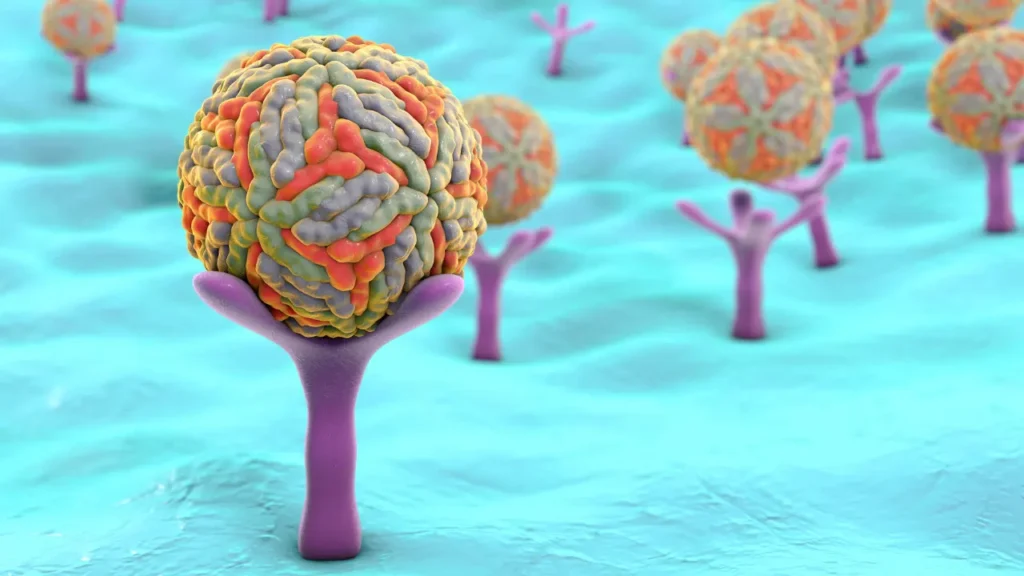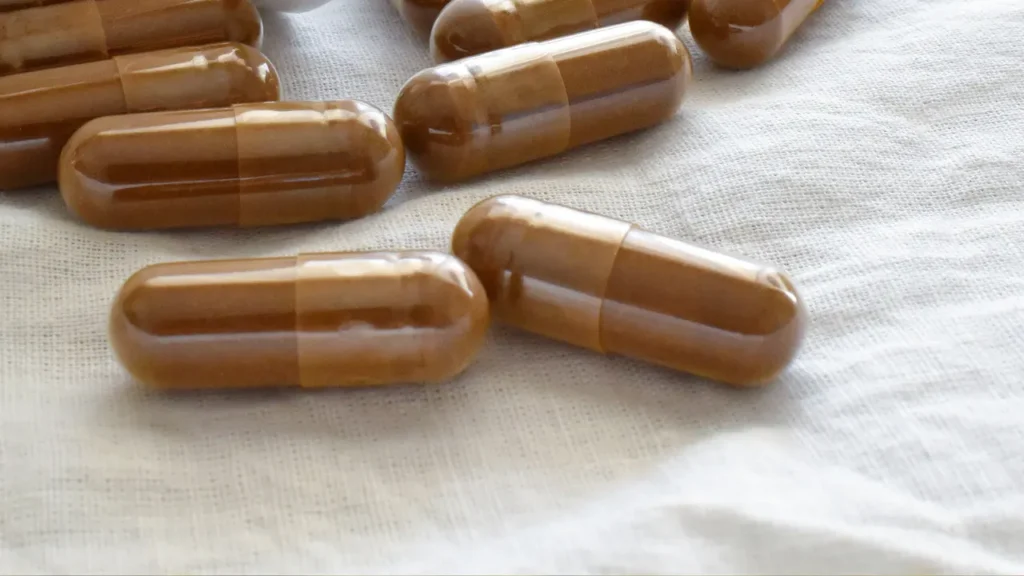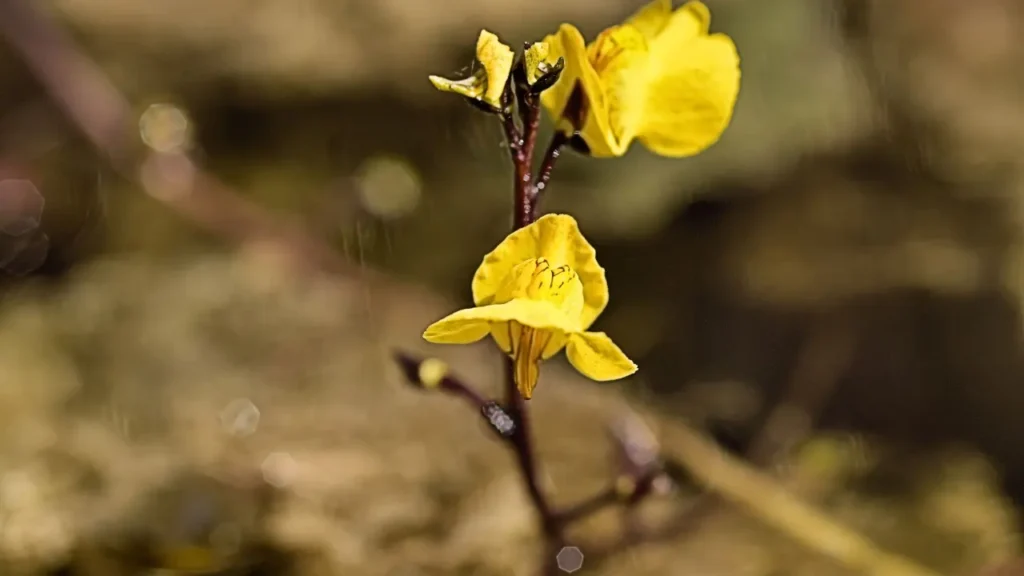Utricularia spp., a rare species of carnivorous plants, has drawn the interest of ecologists, horticulturists, and even botanists. Its unique bladder-like structures, which act as traps to seize and digest small aquatic prey, including protozoa, algae, and tiny invertebrates, give bladderwort its amazing qualities. Typically, bladderwort plants can be found in marshes, ponds, and slow-moving streams that are shallow freshwater habitats. The Utricularia genus has approximately 200 known species, which is a remarkable degree of variety.
While a new study has started investigating bladderwort’s potential as a nutritional supplement, looking into the plant’s distinctive phytochemical makeup and potential health benefits, it is still primarily renowned for its carnivorous characteristics and decorative appeal. With a focus on the characteristics of its active ingredients, health advantages, ideal dosage, side effects, probable drug interactions, and appropriate uses, this article seeks to give an in-depth overview of the present state of knowledge regarding the therapeutic potential of bladderwort.
You May Also Like:
5 Great Nootropic Herbs for Focus and Mental Clarity
5 Great Nootropic Herbs for Energy, Focus, and Productivity
Bladderwort: Benefits, Dosage, Side Effects, Drug Interactions, and Other Important Information is an original (NootropicsPlanet) article.
Nature of Bladderwort
The genus of carnivorous plants known as bladderwort (Utricularia spp.) is unique and fascinating. Small, bladder-like structures on these plants work as specialized traps to catch and ingest microscopic aquatic animals, which distinguish these plants from other species. Due to their carnivorous nature, which supplies them with vital elements like nitrogen and phosphorus that are limited in their surroundings, bladderwort plants have evolved to live in habitats that are low in nutrients.
These plants can be submerged or floating on the water’s surface and are often found in wetland environments, including marshes, ponds, and slow-moving streams. A complicated process incorporating negative pressure and a hair-trigger system powers the bladderwort traps. The trapdoor opens when a tiny organism rubs against the trigger hairs, allowing water and the prey to be drawn into the bladder. The prey is processed inside the bladder once the trapdoor closes, giving the plant vital nutrients.
With over 200 species found all over the world, bladderwort species display a remarkable amount of physical and ecological variety. The plants can be aquatic, terrestrial, or epiphytic, and they frequently have colorful flowers that draw pollinators. The cosmetic appeal of bladderwort plants has long been recognized in addition to their ecological importance, and several varieties are raised for their eye-catching blooms and interesting trap structures.
Exploring the possible health benefits of bladderwort plants as a nutritional supplement has gained interest due to their distinctive characteristics and wide range of bioactive chemicals. The phytochemical components of bladderwort have recently been shown to have therapeutic potential, opening up new possibilities for creating health-promoting supplements and possible pharmaceutical uses.
Health Benefits of Bladderwort
Preclinical research on bladderwort’s medicinal potential has yielded encouraging results in the following fields:
- Bladderwort extracts have been demonstrated to have strong antioxidant and anti-inflammatory activity in vitro, which may be a factor in their overall health-promoting effects. These characteristics may be especially helpful in treating persistent inflammatory problems and avoiding illnesses brought on by oxidative stress.
- Anticancer qualities: Some bladderwort elements, in particular a few alkaloids, have shown anticancer action in both in vitro and animal models. These substances might work by triggering apoptosis, preventing cell division, and regulating immunological reactions. More research is necessary to determine the bladderwort’s medicinal potential in the treatment and prevention of cancer.
- Neuroprotective properties: Bladderwort extracts have demonstrated possible neuroprotective effects in preclinical investigations, with data pointing to potential improvements in cognitive function, neuroinflammation reduction, and protection against neurodegeneration. These results call for more research to ascertain bladderwort’s potential uses in the treatment of neurological illnesses.

Chemistry of Bladderwort
Although the chemical composition of bladderwort varies greatly between species, numerous types of chemicals, including flavonoids, phenolic acids, and alkaloids, have been identified as having potential biological activity. A class of polyphenolic substances called flavonoids are well known for having anti-inflammatory, antioxidant, and vasodilatory effects. There are several flavonoids found in Utricularia spp., including luteolin, kaempferol, and quercetin. These substances have been demonstrated to have a variety of pharmacological actions, including the reduction of oxidative stress, modification of cell signaling pathways, and disease prevention.
Another class of polyphenolic chemicals present in bladderwort, called phenolic acids, are also known for their anti-inflammatory and antioxidant capabilities. Gallic acid, chlorogenic acid, and ferulic acid are a few examples of phenolic acids found in Utricularia spp. These substances have been demonstrated to regulate enzyme activity, prevent lipid peroxidation, and shield DNA from harm.
Alkaloids are chemical molecules with nitrogen that are present in a wide range of plants, including bladderwort. Preliminary research suggests that bladderwort alkaloids may have anticancer, antifungal, and antiviral activities, albeit their exact composition and biological activity have yet to be fully defined.
Physiological Mechanism of Action
The wide range of phytochemicals included in bladderwort may have medicinal effects in a variety of ways. Flavonoids and phenolic acids, for example, have antioxidant and anti-inflammatory effects that help reduce oxidative stress and inflammation, two factors that are linked to the development of many diseases. These substances can shield cells and tissues from harm and improve general health by scavenging reactive oxygen species (ROS) and reducing the generation of pro-inflammatory mediators like cytokines and prostaglandins.
In addition to its anti-inflammatory and antioxidant properties, some bladderwort ingredients have the potential to control the activity of vital enzymes involved in metabolism and cellular signaling. For instance, it has been demonstrated that flavonoids like quercetin limit the activity of xanthine oxidase, an enzyme involved in the metabolism of purines and the formation of ROS. Similar to how chlorogenic acid can modify the activity of enzymes involved in glucose and lipid metabolism, phenolic acids can also regulate energy homeostasis and reduce the risk of metabolic diseases.
In addition, bladderwort alkaloids may directly interact with cellular targets such as receptors, ion channels, and enzymes in order to exert their therapeutic effects. Although the exact molecular targets and pharmacological actions of bladderwort alkaloids are still not fully understood, accumulating data suggests that they may regulate various cellular processes, such as cell proliferation, death, and immunological responses.


Optimal Dosage and Administration
Since bladderwort is a relatively new dietary supplement, there has yet to be a standardized dosage or route of administration. The optimal dosage may change depending on the particular bladderwort species, the extraction technique, and the user’s health. The right dosage and method of administration for various therapeutic uses will require further clinical trials and regulatory standards.
Side Effects and Safety
Although bladderwort has been traditionally used in many different cultures, nothing is known about its safety or any potential negative consequences. According to preliminary research, bladderwort extracts are generally well tolerated and have not been associated with any serious adverse effects in animal trials. However, additional studies are required to validate the safety and tolerability of bladderwort as a dietary supplement, particularly in controlled human trials.


Potential Substance Interactions
Information on possible drug interactions with bladderwort is currently scarce. Given the variety of bioactive substances found in bladderwort, however, it is probable that interactions with some drugs, particularly those that are metabolized by the same enzymes or have comparable modes of action, could happen. Therefore, before using bladderwort as a supplement, persons using prescription drugs should speak with a healthcare provider.
Responsible Use of Bladderwort
Given what is now known about bladderwort’s therapeutic potential, caution must be exercised when using it as a nutritional supplement. Although preliminary research suggests that bladderwort may have a number of health advantages, further investigation is required to determine its effectiveness, safety, and ideal dosage.
Additionally, it is crucial to confirm that the supplement is produced from a reliable source and standardized for its bioactive ingredients because bladderwort species can differ greatly in their chemical composition. Before using bladderwort, patients should speak with a healthcare provider, especially if they have current medical concerns or are using prescription medications.
Bladderwort:
Conclusion
While bladderwort has been used in traditional medicine for various purposes, scientific studies supporting these health benefits are lacking. More research is needed to establish the efficacy of bladderwort for specific health conditions. Due to the limited scientific evidence, bladderwort’s health benefits, proper dosage, side effects, and drug interactions remain unclear. It is advisable to approach bladderwort with caution, consult with a healthcare professional, and be aware of any potential risks associated with its use.


References:
- Anticancer properties of Utricularia spp. and their bioactive constituents: A review. Retrieved from: https://www.frontiersin.org/articles/10.3389/fphar.2020.00996/full
- bladderwort, (genus Utricularia), genus of carnivorous plants in the family Lentibulariaceae (order Lamiales). link:https://www.britannica.com/plant/bladderwort
- The carnivorous bladderwort (Utricularia, Lentibulariaceae): a system inflates. link:https://pubmed.ncbi.nlm.nih.gov/20007200/
Important Note: The information contained in this article is for general informational purposes only, and should not be construed as health or medical advice, nor is it intended to diagnose, prevent, treat, or cure any disease or health condition. Before embarking on any diet, fitness regimen, or program of nutritional supplementation, it is advisable to consult your healthcare professional in order to determine its safety and probable efficacy in terms of your individual state of health.
Regarding Nutritional Supplements Or Other Non-Prescription Health Products: If any nutritional supplements or other non-prescription health products are mentioned in the foregoing article, any claims or statements made about them have not been evaluated by the U.S. Food and Drug Administration, and such nutritional supplements or other health products are not intended to diagnose, treat, cure, or prevent any disease.
